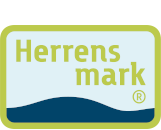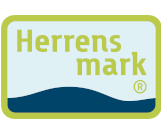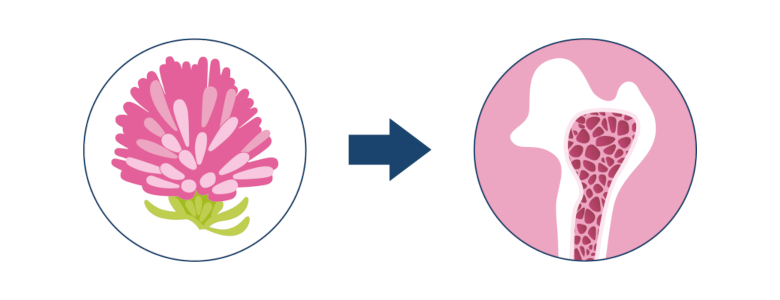What is osteopenia?
Osteopenia is a slight decalcification of the bones, which is defined by a low bone mineral density. A T-score is used to measure bone mineral density. The WHO defines osteopenia as the precursor to osteoporosis (Kanis, 2007). In osteoporosis, which is a disease, the T-score is below -2.5, in contrast to osteopenia where the T-score is between -1 and -2.5 and is defined as a deficiency condition in healthy people.
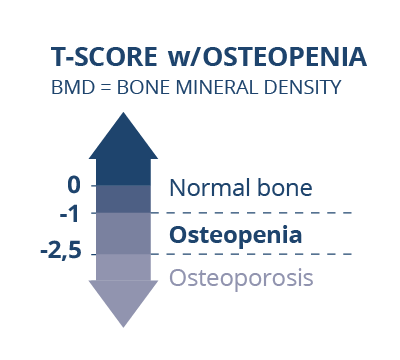
Why do you get osteopenia?
Bones are living tissue, and bone production continues throughout our lifetime. The production of bones is stimulated by physical activity, a healthy diet, intake of calcium, magnesium, vitamins D and K, as well as oestrogen production. Natural decalcification of the bones – an essential part of bone maintenance – is also an ongoing process. So-called osteoclasts (bone cells) break down the bone tissue, and cells known as osteoblasts help restore it. This is how bones are continuously “replaced” throughout your lifetime (Sundhed.dk, 2020). However, the amount of bone mass and bone density peaks at around the age of 30. From then on, the bone mass and density gradually begin to decrease. The bones of menopausal women typically decalcify by 2-5% per year, and 1-3% in post-menopausal women (Lambert et. Al, 2017). If given a bone scan, around half of all 55-year-olds are expected to be found to have osteopenia (Osteoporoseforeningen, 2020).
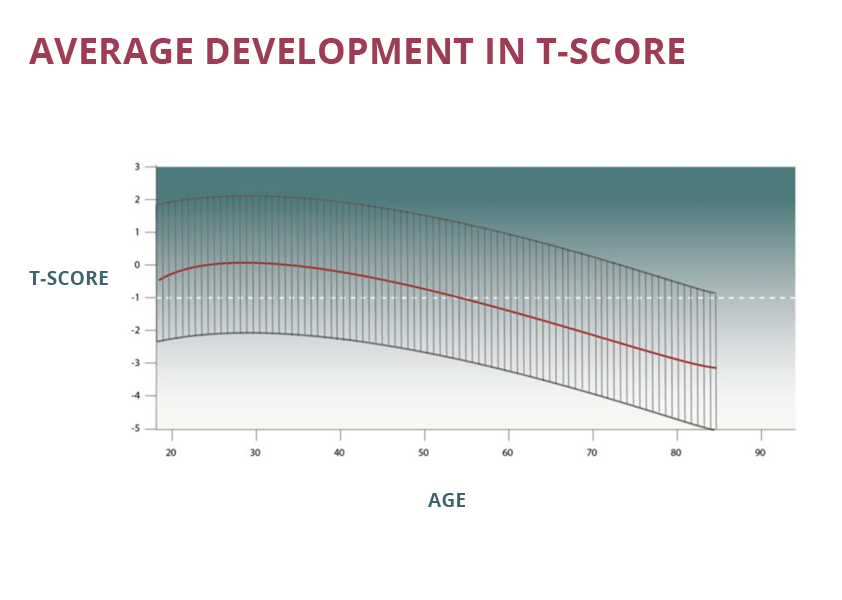
Kilde: Osteoporoseforeningen: Link
Why do you get osteopenia?
Bones are living tissue, and bone production continues throughout our lifetime. The production of bones is stimulated by physical activity, a healthy diet, intake of calcium, magnesium, vitamins D and K, as well as oestrogen production. Natural decalcification of the bones – an essential part of bone maintenance – is also an ongoing process. So-called osteoclasts (bone cells) break down the bone tissue, and cells known as osteoblasts help restore it. This is how bones are continuously “replaced” throughout your lifetime (Sundhed.dk, 2020). However, the amount of bone mass and bone density peaks at around the age of 30. From then on, the bone mass and density gradually begin to decrease. The bones of menopausal women typically decalcify by 2-5% per year, and 1-3% in post-menopausal women (Lambert et. Al, 2017). If given a bone scan, around half of all 55-year-olds are expected to be found to have osteopenia (Osteoporoseforeningen, 2020).
Women and osteopenia
A woman is more likely to develop osteopenia than a man. This is partly because men have a stronger bone structure, and partly because women’s oestrogen production decreases when they reach menopause (Nygaard, 2019). During menopause, some women’s bones decalcify by up to 2-5% per year (Lambert et. Al., 2017). However, when they are no longer menopausal, this figure will return to 0.5-1%, which is normal before menopause. For most women, the onset of menopause occurs when they are around 45-55 years of age. There is no guideline for how long menopause lasts. For some, it will be short-lived, while for others, it may last several years.
How many individuals have osteopenia?
According to figures provided by the Danish Health Authority (Sundhedsstyrelsen), only half of all those aged 50+ who have osteoporosis know that they have it (Sundhedsstyrelsen, 2018, p.19). As osteopenia is only the precursor to osteoporosis, even fewer people are expected to be aware of it if they have osteopenia. In Denmark in the first quarter of 2020, there were 846,615 women aged 55-80 (Statistics Denmark). So, if we assume that at least half of each age group has osteopenia, we can also assume that there are at least 423,308 women with osteopenia.
How are the bones maintained?
A healthy diet with a focus on the intake of calcium, magnesium as well as vitamins D and K is one of the most important factors in bone maintenance. Conversely, smoking and high alcohol consumption will have a negative effect. Physical activity can also help strengthen the body and bones, and thus prevent the risk of falling, among other things. Supplements can also supplement an inadequate intake of vitamins and minerals.
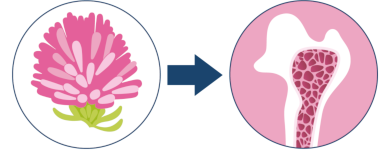
Sources
-
Lambert, Max Norman Tandrup; Meng Hu, Lin; Jeppesen, Per Bendix (2017: „A systematic review and meta-analysis of the effects of isoflavone formulations against estrogen-deficient bone resporption in peri- and postmenopausal women. The American Journal of Clinical Nutrition, pp.801-811. American Society for Nutrition.
-
Osteoporoseforeningen (2020): ”Osteopeni – hvad er det og hvad nu?”. Osteoporoseforeningen.: https://www.osteoporose-f.dk/knogleskoerhed/osteopeni/ , Visited 26/06-2020
-
Nygaard, Birte (2019): Knogleskørhed, risikofaktorer. Sundhed.dk: https://www.sundhed.dk/borger/patienthaandbogen/hormoner-og-stofskifte/sygdomme/knogleskoerhed-osteoporose/knogleskoerhed-risikofaktorer/, Visited 26/06-2020
-
Sundhed.dk (2020) : https://www.sundhed.dk/borger/patienthaandbogen/hormoner-og-stofskifte/illustrationer/animationer/knogleskoerhed-osteoporose/ , Visited: 26/06-2020
-
Sundhedsstyrelsen (2018): Osteoporose – En afdækning af den samlede indsats mod osteoporose, Version 1.0, Published 18/12-2018 https://www.sst.dk/-/media/Udgivelser/2018/Osteoporose/Osteoporose—en-afd%C3%A6kning-af-den-samlede-indsats.ashx?la=da&hash=AC6E054380B701F2CC24F4208D77A2D69D0F6315
